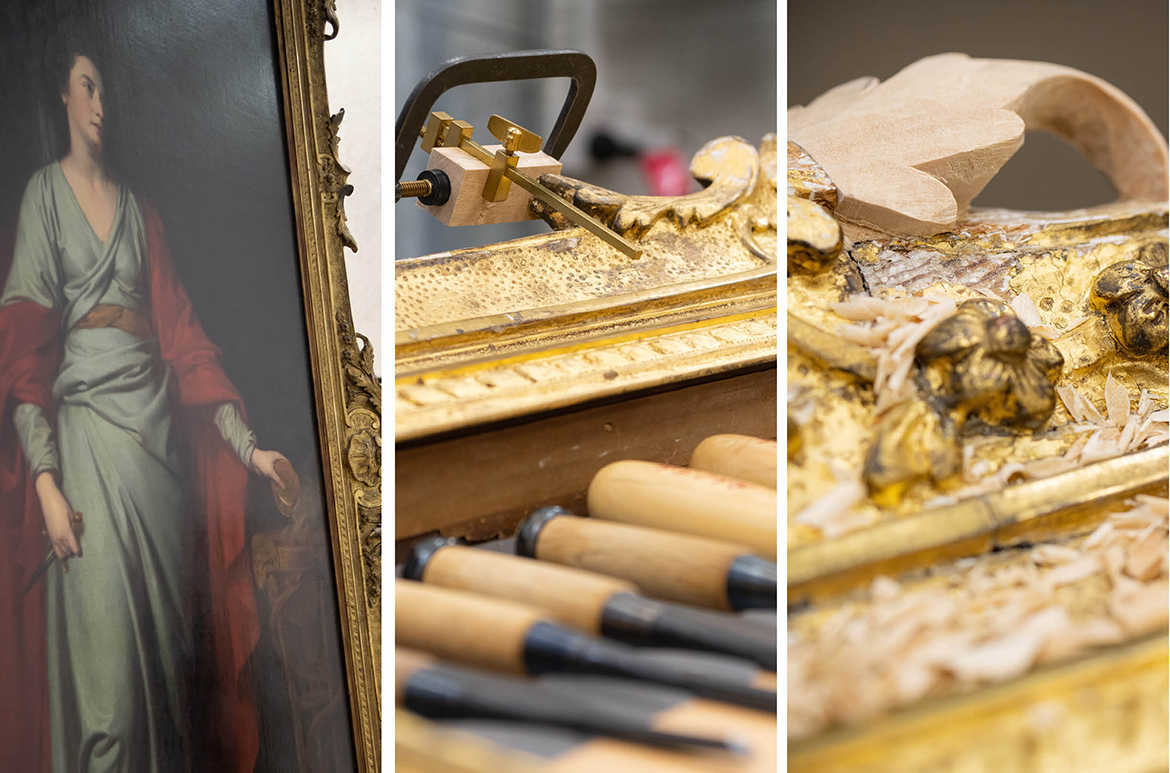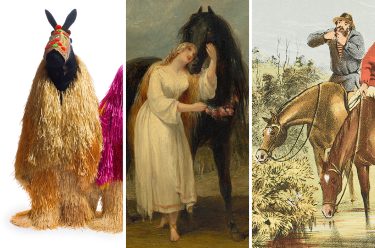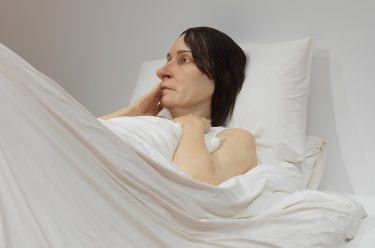Nearly three metres long and two across — and gilded entirely in gold leaf — the imposing frame for George Romney’s 1771 painting, Mrs Yates as the Tragic Muse, Melpomene (illustrated) is a time capsule of framing fashions, repairs and interventions.
QAGOMA is presently the only gallery in Australia with a framing studio where experts both restore and make frames completely in-house, unfortunately a dying art around the world. Before the painting goes on display, we delve into the restoration work involved in Romney’s frame which is something of an archaeological dig. There’s no way (yet) of knowing whether this is the painting’s original frame — however we know up to four different trades would have been employed in making a frame such as this.
The frame is composed of lengths of timber glued together to roughly form the shape and the size of the frame’s profile, then moulding planes shape the frame’s profile before the frame’s ornaments were carved in high relief by inserting blocks of timber to carve back into, finally off to the gilder’s studio to apply several layers of gesso before the gold leaf. Like today, frames of this quality were expensive luxury items that only a few could afford.
Explore the story of the George Romney frame through FRAME/WORK on Collection Online
Watch | Frame restoration time-lapse
Unframing George Romney’s ‘Mrs Yates as the Tragic Muse, Melpomene’

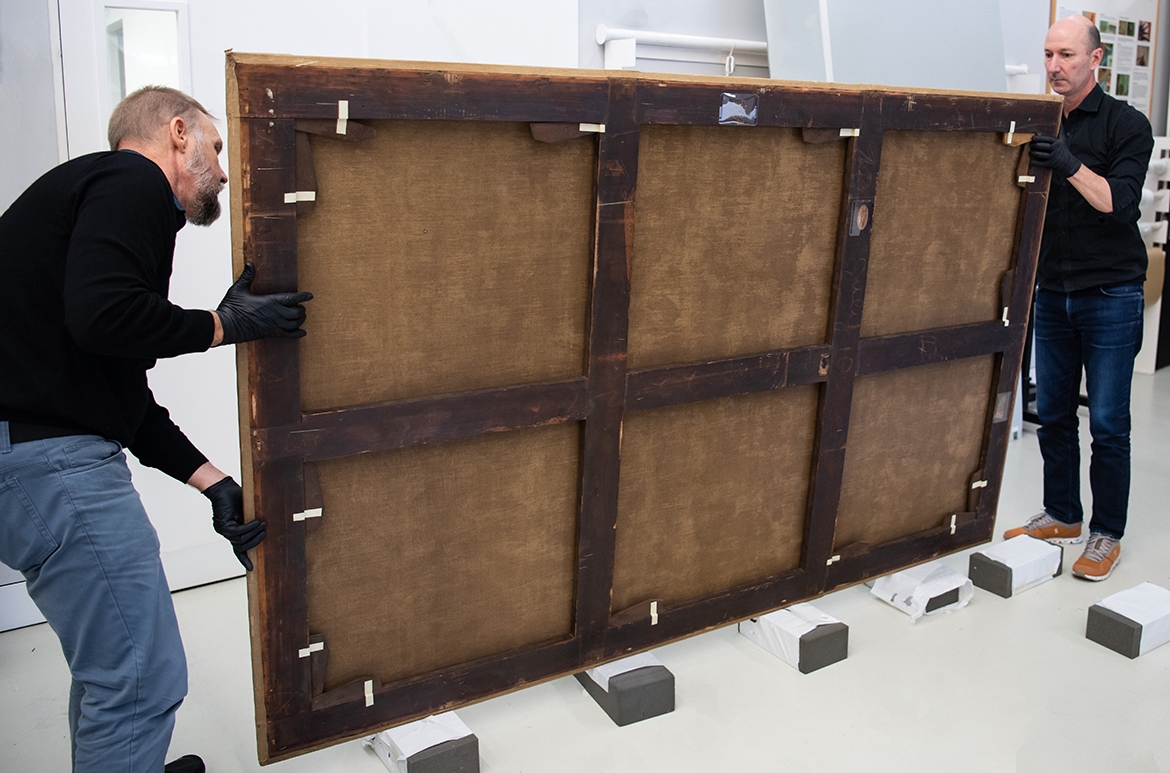
Who is Mrs Yates?
George Romney was one of the most successful portraitists of the late eighteenth century, his sitters who were predominantly female, were often leading social figures or celebrities. Mary Ann Yates (1728–87) was a successful figure in Georgian theatre who was nearly 20 years into her acting career at the time of this portrait. Well known for her roles as Shakespearean heroines, she was a regular at Theatre Royal, Drury Lane. Here, Romney has portrayed her as Melpomene, one of nine muses in Greek mythology — the muse of tragedy.
George Romney ‘Mrs Yates as the Tragic Muse, Melpomene’ 1771
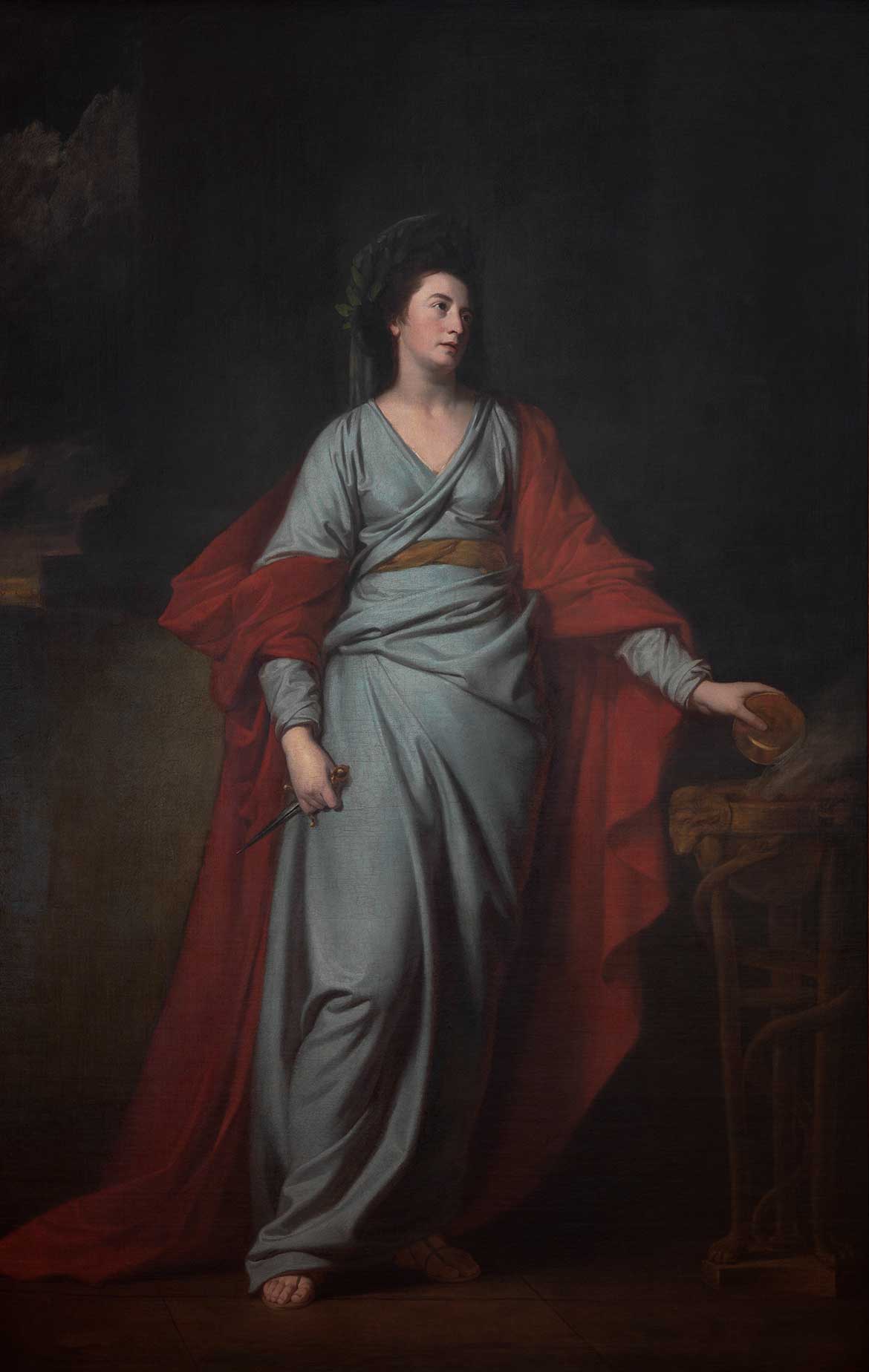
The restoration process
At nearly three metres long, the frame for Romney’s Mrs Yates as the Tragic Muse, Melpomene presents unique challenges, including using era-appropriate techniques to remove and repair centuries’ worth of poor quality restorations. Conserving frames means not only caring for the frame in the context of its paired artwork, but also honouring each frame’s life, history and artistry.


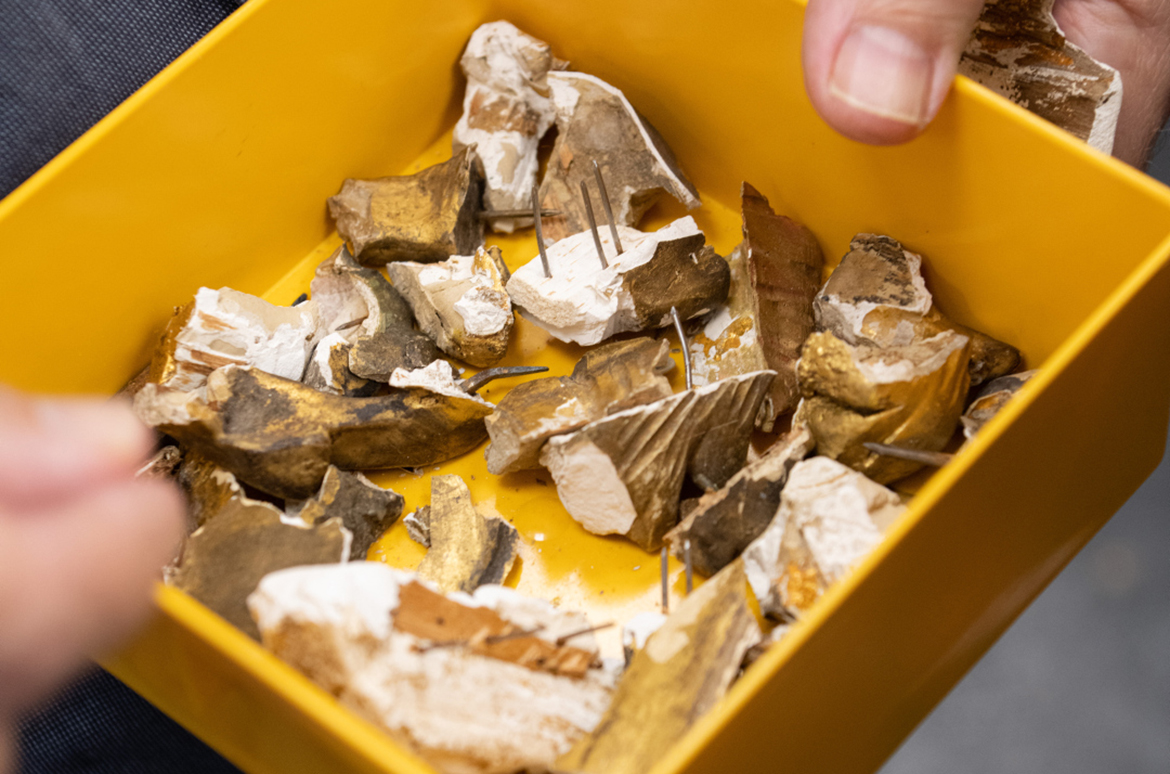

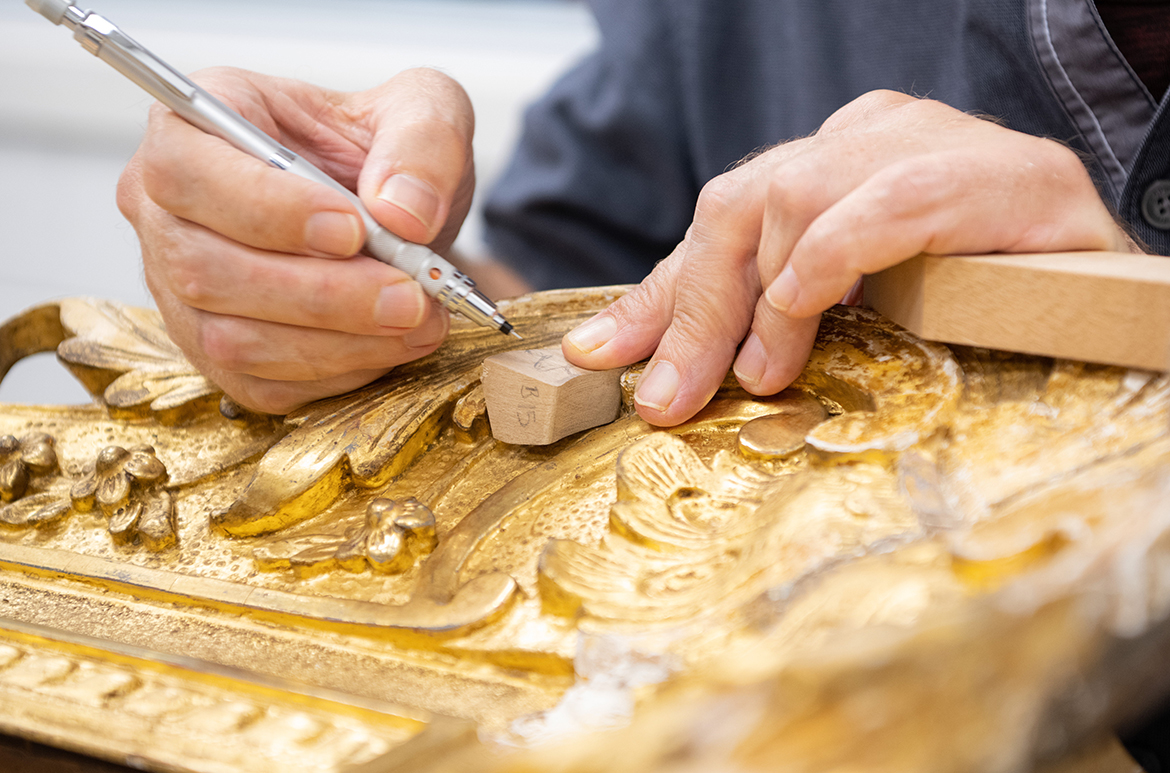

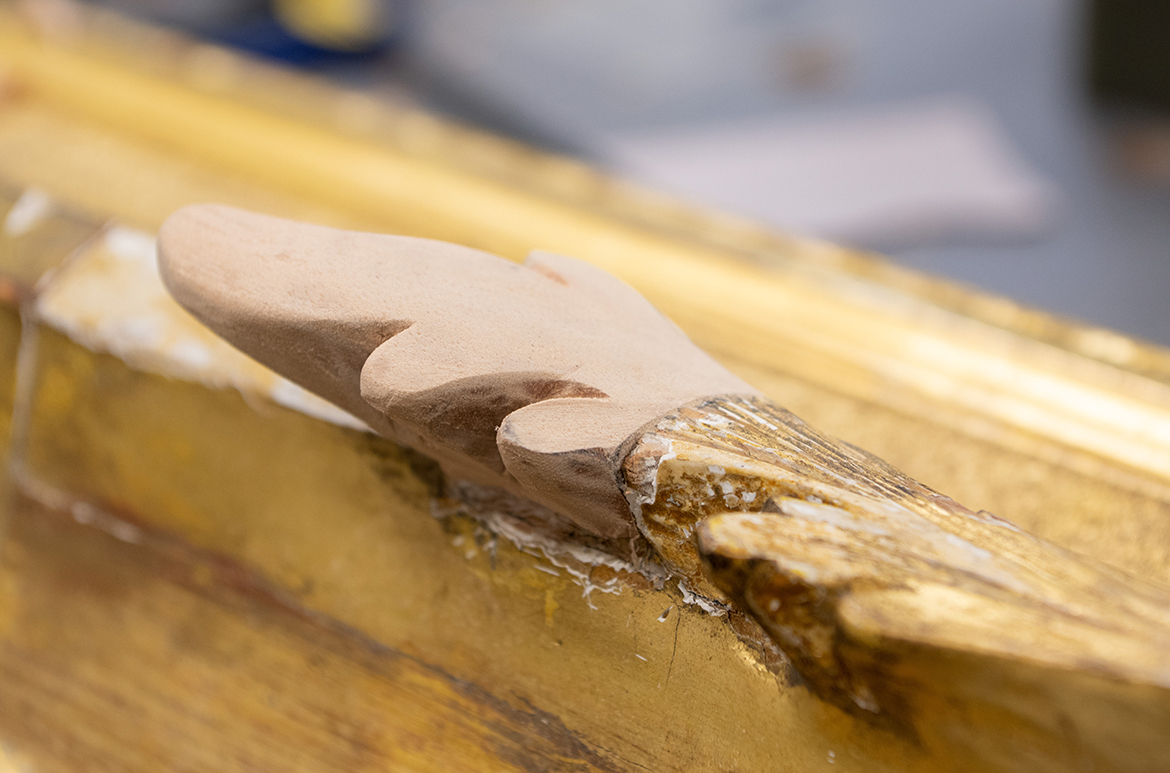
#QAGOMA
